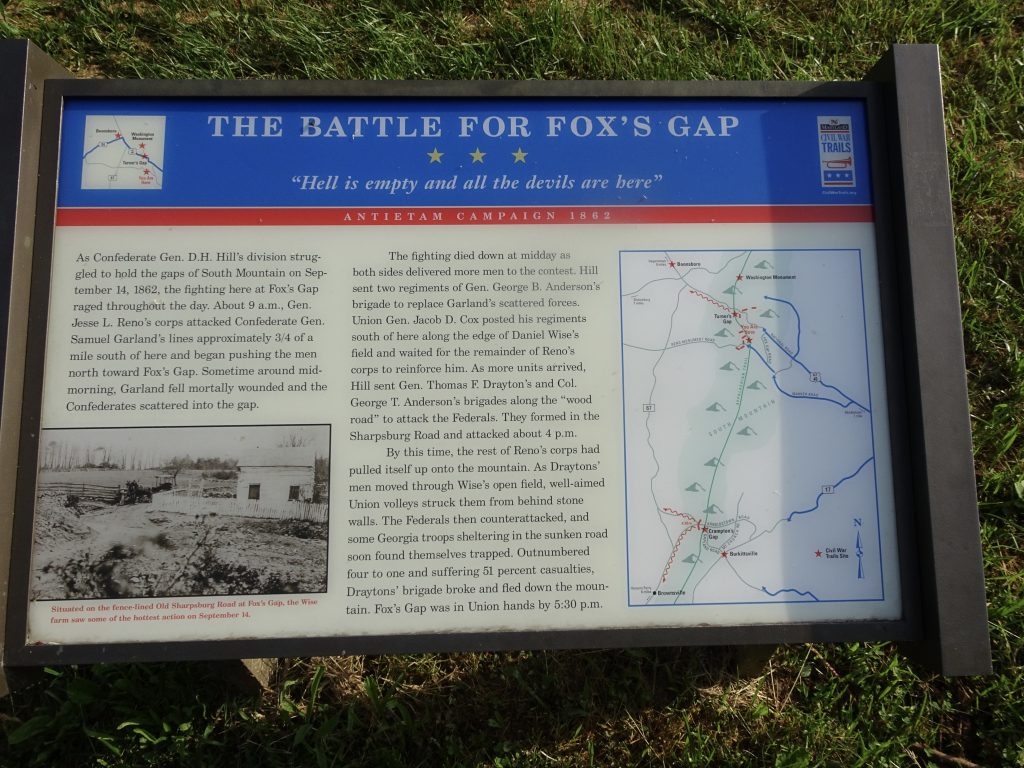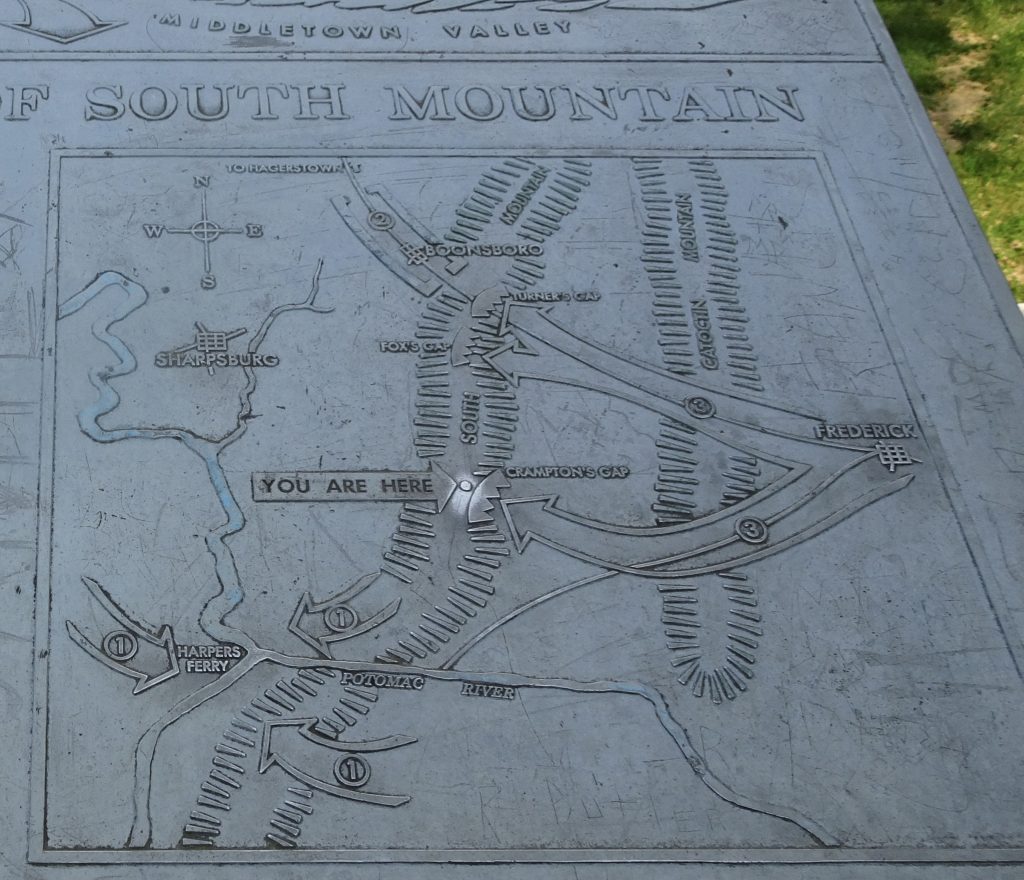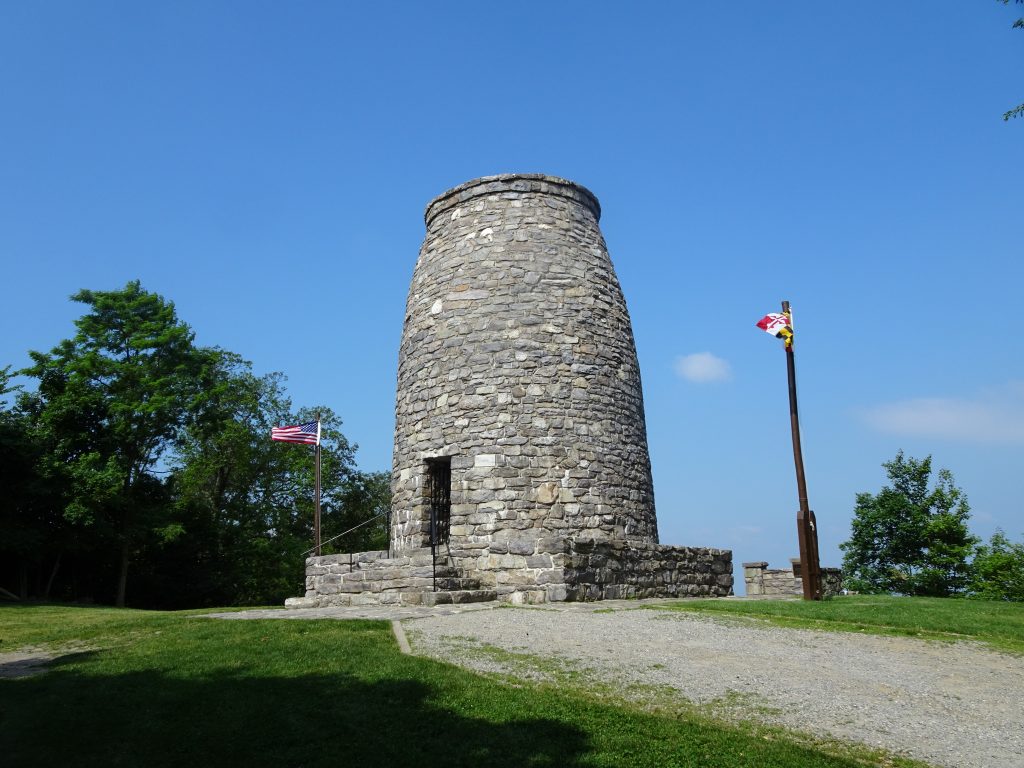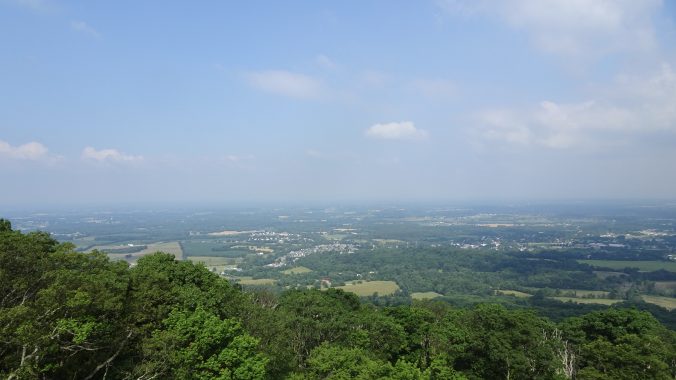The Appalachian Trail traverses 40 miles of Maryland. This is the shortest distance in any state other than West Virginia which makes up only four miles of the AT. The trail in Maryland is relatively flat, following the ridge line. The path varies from extremely smooth to extremely rocky, and everything in between.

Like a walk in the park

On the rocky side
As I walked the trail through Maryland, I could not help but become immersed in Civil War history. I was in this exact place where Robert E. Lee conducted his “Maryland Campaign” in September of 1862. Traversing the ridge of South Mountain, the trail crosses, in succession, Crampton’s Gap, Fox’s Gap, and Turner’s Gap. It is in these three mountain passes that the Battle of South Mountain was fought. The Antietam battlefield lies less than ten miles distant.
As I read the diagrams and text on the park service plaques, I was struck by the level of detail with which historians could enumerate, practically on a minute-by-minute basis, the various decisions of the generals and the actions of the troops. And yet, these these plaques don’t tell the whole story. When it says “exhausted and outnumbered, the troops ‘withdrew’, leaving behind their dead, wounded, and captured”, I am envisioning soldiers running for their lives down the mountain. I read where a farmer at Fox’s Gap was payed one dollar each to bury Confederate solders who died on his farm, sixty of which were thrown down his dry well. This was a messy war.

Civil War Plaque in Fox’s Gap
The life of an AT hiker is piece of cake compared to what the Civil War soldier endured. With none of our modern high tech gear, those soldiers hiked across all kinds of terrain, in all kinds of weather, in poor footwear, while carrying all their belongings on their back. And all that hiking just so they would be in a position to be ordered into harms way at a moments notice.
What puzzled me was why of all places would a battle be fought on South Mountain? This led me to do some research. Here’s the backstory, as I understand it.
The events that unfolded on this fateful day on South Mountain were part of a game of cat and mouse being played between the principal armies for the North and South – the Union Army of the Potomac under the command of George B. McClellan and the Confederate Army of Northern Virginia under the command of General Robert E. Lee.
In preparation for an invasion of Pennsylvania, General Lee hatched a plan to split his army into two parts. He ordered part of his army, under the command of General Stonewall Jackson, to launch an attack at Harpers Ferry to capture the arsenal. The rest of his army would be deployed to Boonsboro, Maryland under the command of Lee and General James Longstreet. In a twist of fate, Lee’s orders were intercepted by the Union General McClellan. Seizing on the opportunity to attack a divided Confederate army, McClellan speed-marched the Union army 25 miles from Washington, DC towards South Mountain which must be crossed to get to Boonsboro.
The day was September 14, 1862. As the Union army poured up the gaps, Lee and Longstreet deployed troops from Boonsboro to the gaps to repel the Union advance. The battle raged through the day with both sides adding reinforcements. By night fall, the Union has taken the high ground on the mountain and had driven the Confederates from Crampton’s Gap. The Confederates still precariously controlled Fox’s and Turner’s Gaps. The Union might have made further gains by pressing the battle, but, as one person observed, “a spirit of leisure seemed to pervade McClellan’s headquarters.” (McClennan had a reputation of being overly cautious. On several previous occasions he had not attacked, thinking he was outnumbered, when in reality he had the superior force.) In the course of the battle, 768 soldiers had been killed, with an additional 3367 wounded.

By the next morning, Lee withdrew his forces from the mountain and reconsolidated his army at Sharpsburg, with the Union declaring victory on the mountain. Only a few days later, the two armies clashed at the Battle of Antietam. This would be the bloodiest battle in US history, with 3675 soldiers killed and over 17,000 wounded. Lee again withdrew his army from the battlefield and pulled back into Virginia.
Lincoln ordered McClellan to pursue Lee’s army into Virginia. McClellan refused, citing all kinds of excuses. After six weeks of back-and-forth, an exasperated Lincoln dismissed McClellan from his post. Lincoln and McClellan would become political archenemies. McClellan won the Democratic nomination and ran against Lincoln in 1864, but lost in a landslide.
The AT in Maryland passes through a couple of state parks. Hikers love parks because they usually have trash cans, water fountains, flush toilets, and if you are really lucky, a concession stand. One of the the parks was the home of the “original” Washington Monument which sits near the summit of South Mountain’s Monument Knob. Built in 1827 to honor George Washington, the monument was used by the Union army as a signaling station during the Civil War.

Washington Monument
Some flora and fauna from the trail…

Wild Rose

Brown Thrasher

Juvenile Eastern (Red-Spotted) Newt
If you’d like to receive an email when a new post is up on the blog, click the email icon on the bottom of the page to subscribe. Thanks for following!
